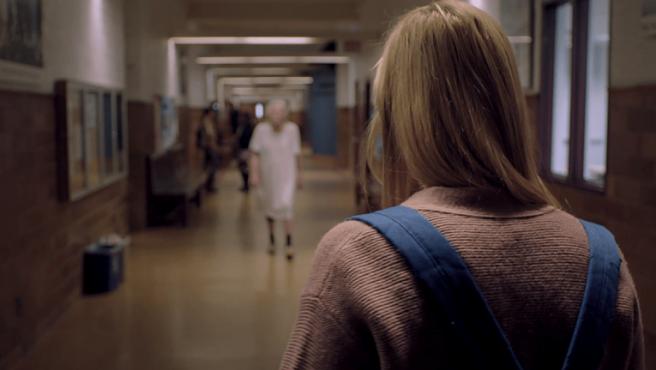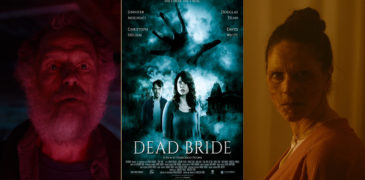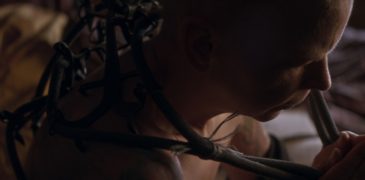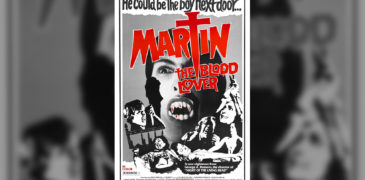
Imagine a scenario involving a casual sexual encounter. You are out at a club, have a few drinks, and meet an attractive companion. Excitement and inebriation cause a momentary lapse in judgment, and you engage in unprotected intercourse. Days, weeks, even months later, you fall ill and make an appointment to see your family physician. The doctor informs you that you have been infected with a novel and deadly STI. You realize your night of thrills and pleasure has caused a new nightmare. You fear for your health and live in a state of uncertainty. The ambiguity of your future compounds your anxiety. You feel you are condemned to live in terror until your inevitable and painful death. Because they fear transmission, your family and friends alienate you. You worry that you will perish alone with only a doctor in a hazmat suit accompanying your bedside.
Many Americans, unfortunately, experienced such a terror during the 1980s AIDS epidemic. People lived in fear of casual sex due to the possibility of obtaining a deadly disease. Even today, the legacy of AIDS still haunts many people around the globe. Although the disease can now be managed, the social panic of the 1980s have caused people to hold irrational fears related to HIV and other STI transmissions.

The horror of the AIDS epidemic reverberated throughout American society in the 80s and early 90s. New York City public schools showed the film Sex, Drugs, and AIDs (1986) to adolescent students, hoping to educate them regarding the dangers of the virus. Jerry Falwell preached the “Do it and Die” sermon in 1987, indicating that AIDS was God’s punishment for the sexual revolution. The Southern Baptist Convention denounced “safe sex” and publicly endorsed abstinence. Other conservative groups launched abstinence campaigns designed to frighten teenagers away from sexual intercourse. The 1991 film No Second Chance, for example, tells students to “prepare to die” if they choose to engage in premarital sex. The Traditional Values Coalition, furthermore, tried to warn Americans of the “gay threat” facing the country. Although they did not specifically mention AIDS, the group implied the disease was spread by gay sinners who were threatening the traditional family.
The plot of It Follows takes the fear generated from a 1980s moral panic and uses it to terrify the viewer. Rather than a virus, however, Mitchell uses causal sex to unlock a curse involving stalking ghosts. These cryptic entities shadow their victim until they get within striking distance. Then, they unleash a violent wrath and mutilate the sexually contaminated. The only reprieve from the curse is to pass it along to another hapless victim through more casual sex.
Is Mitchell promoting a film calling for sexual abstinence? Probably not. It does appear, however, that Mitchell uses social and political issues from the 1980s, particularly the AIDS crises, to create a truly terrifying experience. “The truth is, a lot of people read it that way,” says Mitchell when responding to critics linking the “it” with HIV. “I don’t want to tell them they shouldn’t. I made the film intentionally to be open to lots of different interpretations.”

The terror that befalls many victims in 80s horror, in general, seems to be a consequence of some moral gaffe. Whether it is drug use, greed, the occult, or lust, the villain in many 80s horrors manifests because of ethical slip-ups. Using the concept of taboo teenage sex, It Follows continues the motif of 80s horror and elevates it to terrifying levels. Considering this, however, an important question comes to mind: Why does 80s-style horror focus on morality?
Following the sexual and counter-culture revolution of the 1970s, the 1980s was one of the most conservative decades in American history. In reaction to liberal social movements and economic policy, the Reagan and Bush controlled 1980s were determined to bring America back to a nation of traditional values. Apart from supply-side economics and aggressive foreign policy, social conservatism was an important motive of the New Right. One can probably remember Nancy Reagan’s “Just Say No to Drugs” campaign aimed at “fixing” recreational drug use of decades past. The Religious Right, alongside the questionable journalism of Geraldo Rivera, help propagate a Satanic Panic blaming heavy metal, Dungeons and Dragons, and drug use to explain the “rise” of the occult.

The most pressing social issue, however, was the “break-down” of the traditional family. The 60s and 70s sparked a sexual and feminist movement. The traditional family was in jeopardy and the New Right was determined to stop the spread of liberal sexual policies. In 1981, social conservatives passed the Adolescent Family Life Act (AFLA) intended to promote sexual abstinence as a form of birth control. The religious right quickly supported the motive and the 1980s would become the decade known for national chastity.
Teenage lust was a huge social concern and is manifested in 80s horror. One of the lessons of Friday the 13th was the consequence of premarital sex. If one engages in reckless premarital sex, a child may drown and come back to haunt you (or maybe his psychotic mother). In The Lost Boys, Michael is lured into vampirism by a beautiful half-vampire named Star. The lesson being, licentious teenage behavior can lead to permanent changes and the possible break-up of the nuclear family.
Sinful characters, in general, are targeted by 1980s villains. Clive Barker’s Hellraiser highlights the consequences of pleasure-seeking gluttony. When seeking ultimate gratification, Frank Cotton unlocks the realm of the Cenobites determined to torture him for eternity. Sam Raimi’s Evil Dead demonstrates the penalties for demonic activity. If you read from the Necronomicon, evil demons will come for your soul and possibly sexually assault you with a tree branch. It Follows pays tribute to the consequences of 1980s immorality, particularly for lustful, un-wed young adults.

Perhaps one subtle message lying beneath the surface of It Follow, is the problem of ethics. The characters in the film seem to have few qualms about passing the sexually transmitted curse to other partners. When damned by a sexual curse, do you have a moral obligation to refrain from additional sexual partners? Or is it morally justified to transmit the curse to someone else in an effort to save oneself, even if only temporarily?
The polemic of profligate sexuality vs. moral chastity, when contagious with a sexual curse (or disease), makes for an interesting thought experiment. The brilliance behind Mitchell’s work, once again, can be traced back to conservative policy of the 1980s. Laissez-faire and supply-side economics certainly do not take account of ethics and morality. Survival of the fittest was the economic maxim throughout the Reagan Revolution. Individualism was more important than social collectivism, with personal wealth and satisfaction outweighing the needs and desires of the commons. The light-hearted transmittal of a deadly sexual curse is emblematic of individualist greed portrayed within 1980s economic policy. “Do what is best for oneself and to Hell with anyone else,” perhaps an appropriate maxim for 80s economic policy. The libertarian attitude regarding the sexual transmission of a curse is another aspect that makes It Follows horrifying.
It Follows, additionally, seems to deliberately leave out whether or not condom use is an effective barrier against the transmission of the curse. Was this intentional? Perhaps Mitchell neglects a conversation about condom use to augment suspense and heighten one’s anxiety. Throughout the 80s AIDS pandemic, social conservatives constantly downplayed the efficacy of proper condom use. John Cardinal O’Connor, for example, tried to prevent the distribution of condoms in 1989. Many social critics, additionally, feel the Catholic Church, by condemning condom use, contributed to millions of HIV infections worldwide. By the early 1990s, conservative groups propagated doubtful claims about condom use. In the film, the Myth of Safe Sex, for example, conservatives tout abstinence by claiming condom use results in unwanted pregnancy at least 25% of the time. They assert, furthermore, that condoms have a 31% failure rate and claim sexually active teenagers have higher rates of suicide.

The message to many Americans was to doubt the value of condoms and to embrace abstinence as the only effective barrier against HIV, unwanted pregnancy, and other STIs. The campaign of abstinence-only amplified the moral panic of the AIDS epidemic and vastly increased social fear regarding premarital intercourse. It becomes obvious that It Follows uses fear generated from conservative 80s moral panics, to create a chilling movie experience.
More Film Reviews
Nightmare Symphony (2020) Film Review – Visions of Giallo
Italian Giallo cinema holds a special place among horror fans and cinephiles alike, myself included. Consequently, anytime a production tries to harken back to the era of black glove wielding…
Romi (2023) Film Review – Ghost in the Machine [Blood in the Snow Film Festival]
Romi is a 2023 Canadian sci-fi horror, written by Susie Moloney, and directed by Robert Cuffley. Susie is most notable as a writer on the TV shows Blackstone (2015), and…
Island of Death (1976) Film Review – Horror on Mykonos Island
Island of Death (Ta Paidia Tou Diavolou) is a 1976 exploitation horror film written and directed by Nico Mastorakis. Most notable as the founder and owner of independent film studio…
Dead Bride (2022) Film Review – Misdeeds of the Past Haunt Later Generations
Francesco Picone’s Dead Bride (2022) is not a live-action version of Corpse Bride, Tim Burton’s animated, family-friendly necrophilic tale. Although it borrows many elements from beloved horror films, such as…
Luzifer (2021) Film Review – Religious Fervor and Unforgiving Isolation
“Every day we stray further from God’s light” may be a ‘meme-able’ saying, but it is one that is none-the-less true when we look at a mix of contempt and…
Martin (1977) Film Review – The Horror of a Very Sad Vampire
Martin doesn’t think much of being a vampire. He knows what he gets up to once the sun goes down. The way those women look at him when he suddenly…


![Romi (2023) Film Review – Ghost in the Machine [Blood in the Snow Film Festival]](https://www.grimoireofhorror.com/wp-content/uploads/2023/11/Romi-cover-365x180.jpg)



